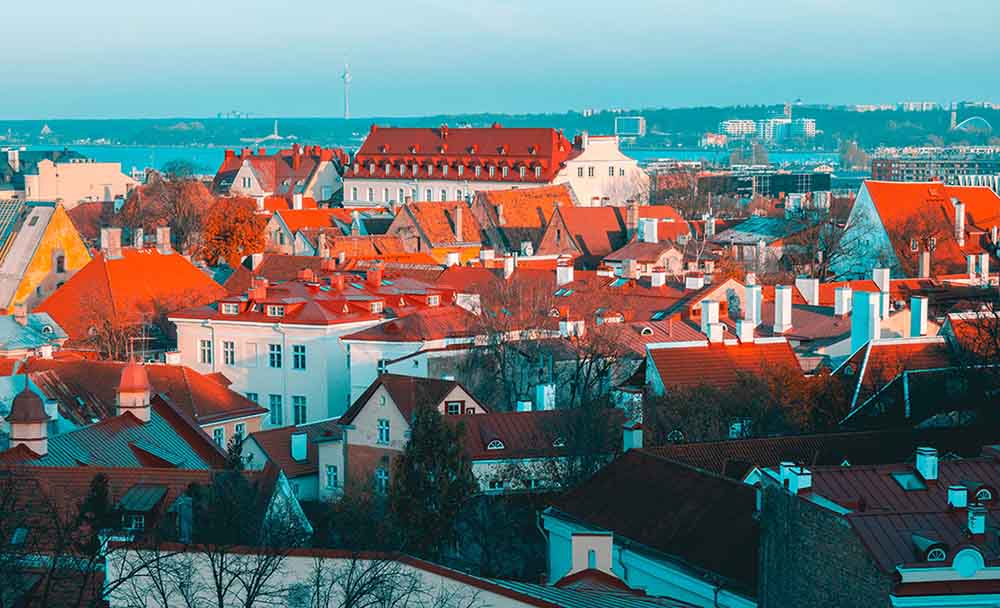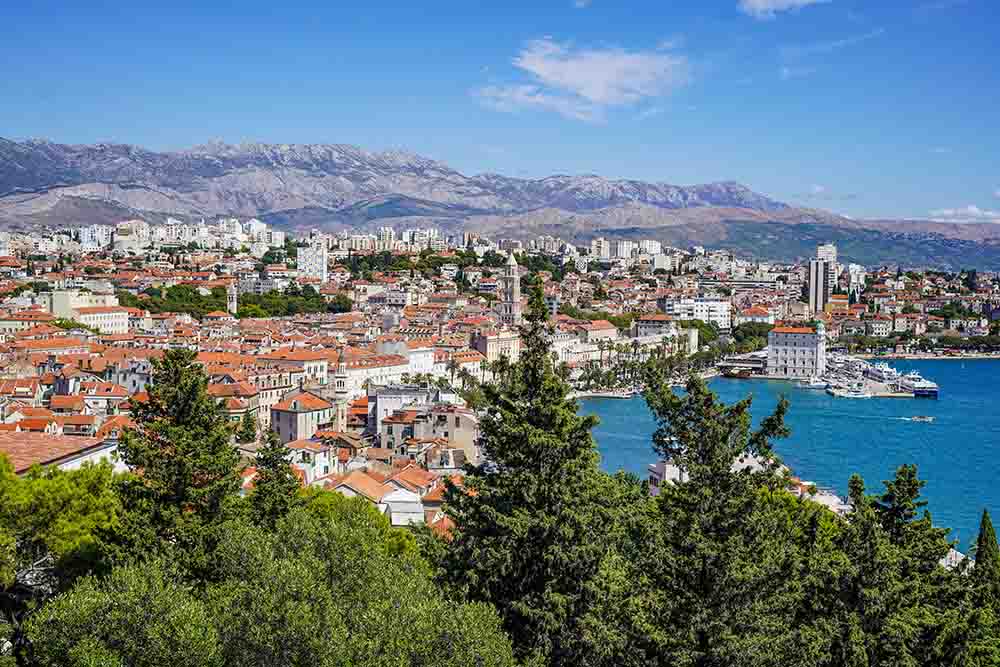With a global pandemic now behind us, there are many realities that have changed as a result, and how people work, or more specifically, where they work from, has changed completely. We are seeing the rise of the digital nomad and of fully remote or hybrid work, and companies must be up to the challenge to integrate these new ways of working into their company policies. In this article we will look at what is a digital nomad and the top 15 places to go for nomads.
What is a digital nomad?
A digital nomad is a person who relies on digital technology to work remotely from anywhere in the world. They usually need very little to do their job: a laptop, a place to plug in, a cell phone (to act as a mobile hotspot in a worst case scenario) and a reliable internet connection. So what are digital nomads? They are people who earn a living working online in different locations, rather than having a fixed office. As long as they have the aforementioned essentials, their job can usually be done from anywhere including: a co-working space, a hotel lobby, an RV, a café or a public library.
What are the most common digital nomad jobs
As long as you don’t need certain tools or infrastructure for your job and you can manage your job online, then you can essentially do any job remotely. Some of the most common jobs for digital nomads are the following:
1. Virtual assistants
This is a relatively new type of self-employed job where you provide administrative support, usually from a remote location. These tasks can range from basic administrative tasks, to travel arrangements, assisting with copywriting and research or simply supporting the day-to-day work of a busy executive.
2. Digital marketer
The digital nature of this job means that the job can essentially be done from anywhere which is why digital marketers are strong candidates for being nomads. They can perform meetings online via one of the video conferencing programs and can carry out all their work including social media management, campaign planning, data analytics, search engine optimization and more with the help of a reliable internet connection. If they have co-workers elsewhere on the globe, all they need to be successful is a good collaborative project management tool.
3. Writer
Previously all a writer needed was a notepad and a pen; nowadays with a laptop and internet, a writer can work from anywhere. Writing has taken on many shapes and forms and can be a ghost writer, a content writer, a blogger, and/or copywriters, among many other types of writers.
4. Graphic Designer
Graphic design is an easy profession to take on the road with you, whether it’s web development, logo design, or advertising-related work. You can meet with clients online and use collaborative programs like figma to help facilitate the review process.
5. Entrepreneur
Seeing as new endeavors often don’t have or need a lot of infrastructure, entrepreneurs can often find themselves as great candidates for being digital nomads, especially those with digitally-oriented startups and other self-employed business owners.
How to be a digital nomad
Whatever your profession, choosing to take it on the road is no easy decision. So we’ve outlined some of the pros and cons to make it easier, and further down, you can find out how to become a digital nomad in 5 easy steps.
Pros of being a digital nomad
There is a reason why more and more people are choosing to be digital nomads, and that is because it provides flexibility, a new way of living with limited possessions, a strong sense of community and reduced expenses. Plus, it’s a great way to see the world while working at the same time.
Cons of being a digital nomad
While being a digital nomad can sound very romantic at times, it’s important to recognize that it does have some downsides. For starters, homesickness is a real thing; moving around all the time can allow you to feel the need for roots, and it can be tiring to pack and unpack all the time. Plus, it can be a hassle to manage taxes, visas and other bureaucratic matters when you’re changing countries all the time.
How to become a digital nomad in 5 easy steps
1. Research the destination
There is a lot to consider when choosing a place to reside as a digital nomad, whether it be for 2 weeks or 2 years. You will want to begin by considering the cost of living and choose a destination where you can live like a queen while living on minimal money. Then look at time difference, connectivity, transportation, visas and taxes (which we will talk about in a little bit), and the overall community; the more popular the destination for nomads, the more at home you might feel.
The important thing is that digital nomad communities want internet, and most importantly they need a fast internet, which allows them to work easier. Digital nomads, after all, must be able to rely on a good internet connection in order to take their jobs with them.


2. Plan out your expenses
Of course it’s impossible to know exactly how much you will spend in detail, but it’s important to have a general idea. Being a digital nomad in a city like Tokyo after all may not be worth it (keep reading to find out what countries are worth it). Some things to consider are transportation (within the country and to and from), housing, food and a phone plan. Will you rent a workspace? All of these decisions should be factored into your budget.
3. Investigate bureaucratic matters
Bureaucracy for nomads can mean a lot of different things. For starters, you will need to look into visa matters. Consider how long you can be in the country without a visa, and what kind of visa you need if you stay beyond that time limitation to decide whether it’s worth it to go through the visa process or not. You also need to consider what kind of health insurance you will need and what it covers.
You will also want to look into currency and the best way to pay for things while you’re there, i.e. are you eligible to open a bank account or should you rely on your home country’s bank account and what kind of transaction fees or commissions will that entail? Finally, and the most dreaded of the bureaucratic matters, find out what your tax obligations are both in your home country and should there be any regulations for the country you decide to reside in.


4. Store or give away your belongings
You may decide to go rogue and give up all the belongings that don’t fit in a suitcase, or you may decide to store your things in a storage unit or at your parent’s house. No matter what you choose, this is an important step in your digital nomad journey.
5. Communicate your decision to your employer or clients
Whether you’re self-employed or employed by a company, it’s important that you communicate your decision to the people you work with for practical reasons. If you are working with other people, ideally you would choose a destination whose time zone is close enough to your home country’s that it won’t impact your meetings and collaborative work.
In the case where the time zone is totally different, make sure your email signature and slack status makes it clear what time zone you are working in. This will avoid confusion or work calls in the middle of the night. If you are employed by someone, it’s important to work out the logistics in terms of whether they need to hire you by a local affiliate office or if their contractual agreements allow employees to reside outside the country where they are hired from.

15 Top destinations for digital nomads
Now that we’ve discussed the logistics behind becoming a nomad, the pros and cons and what exactly are digital nomads, let’s take a look at the 15 best places for digital nomads.

1. Lisbon, Portugal
It seems like a few years ago, some Americans couldn’t even place Lisbon on a map. Nowadays, Lisbon is all the buzz thanks to its 300 days of sunshine a year and being one of the cheapest capitals in Western Europe. Portugal is considered the fourth safest country by the Global Peace Index and friendliest country in the world for expats by Far and Wide.
Plus, there’s a great community of nomads, and the cost of living is low, at around $1200 for a couple, with an apartment costing around $600 a month. Visas are relatively easy; if you want to stay beyond 90 days you can apply for a D7 or D2 visa. There is great transportation, tons of coworking spaces and excellent Wi-Fi infrastructure.

2. Chiang Mai, Thailand
With a relaxed vibe and a long history of expat community, Chiang Mai is an ideal place to get the perks of living in a city while living a slow life. Living expenses are low, hovering at around $1000 per month, medical expenses are cheap, and the city is set up for remote workers with readily available Wi-Fi and cafes to work from.
Up until now digital nomads in Thailand had to do visa runs every two months to renew their visa, but the Thai government just launched the Destination Thailand Visa, which allows visa holders to stay in the country for up to 180 days per entry. It is valid for 5 years. It’s a great and cost-effective option for freelancers, digital nomads or remote workers.

3. Medellín, Colombia
Medellin is known as “The City of Eternal Spring.” Need we say more? With an ideal year-round climate, and being considered one of the safest cities in Colombia for solo travelers, Medellin is a great spot for nomads. With public Wi-Fi and many coworking spaces and cafes spread across the city, this city is very accessible for remote workers. The cost of living hovers at around $1500-2000 per month, with taxi fares costing less than $5 for most rides, and you can stay up to 180 days a year without any special kind of visa.

4. Tallinn, Estonia
Tallinn put itself on the nomad map thanks to its E-residency which was launched in 2014 allowing remote workers to register their businesses and work for up to a year. While fiscally it’s a great option, it might not be the best year-round destination. In any case, the city provides great transportation at a cheap $30 a month fee, and you can expect to spend $8-15 per meal, with an Airbnb costing around $800 per month.

5. Ho Chi Minh City, Vietnam
If you want access to everything 24/7 without paying the cost of living of New York City, then, Ho Chi Minh City is for you. In the “City that Never Sleeps” of Southeast Asia, you have access to high speed internet, delicious street food, and cheap accommodations. The average cost of living weighs in at around $950 per month, which makes Ho Chi Minh City a great choice for nomads looking to get the most bang for their buck.

6. Tulum, Mexico
Did you ever wake up and think, “today I’m going to work from paradise?” Well now’s your chance because being a nomad in Tulum is becoming more and more popular thanks to affordable prices, a thriving expat community, beautiful surroundings and a relaxed vibe. Because of its popularity, it will be more expensive than Oaxaca, but still very affordable when compared to the US or other more expensive countries. Definitely opt for a co-working space as Wi-Fi can be challenging in the city due to its jungle backdrop.

7. Buenos Aires, Argentina
In May 2022, Argentina implemented a visa targeted at digital nomads, which can be granted for 6 months and renewable for 6 more months. This makes Buenos Aires a great option for nomads looking for an authentic Latin American city to work from. Prices fluctuate rampantly due to Argentina having some of the highest inflation rates in the world, however, on an average you can expect to spend about $1000 a month in living expenses, with many coworking spaces available, and a vibrant city life to explore.

8. Florianopolis, Brazil
Florianopolis or “Floripa” as it’s known by locals is a bit off the nomad radar, which is what makes this city a great choice. Being one of the cities in Brazil with the highest quality of life, there’s a reason local officials have started calling it Silicon Valley with beaches. Opt for a coworking space to ensure a steady Wi-Fi connection. One of the major perks of this city is that you can easily keep expenses under $1000.

9. Ubud, Bali – Indonesia
Ubud has been a paradise for expats and remote workers for decades, and now the government is following suit. The Indonesian government announced as of June 2022 that they would introduce a digital nomad visa allowing remote workers to live in the country tax-free for five years. This is great news, and with a wealth of cafes and spaces set up to host people working from there, working from Indonesia is a great idea. Nomads can expect to have an average cost of living from $500-1000 depending on accommodations and following a local diet as dining out is very cheap.

10. Split, Croatia
Croatia landed on the digital nomad map when they began offering special visas for non-EU digital workers allowing them to stay in the country up to a year without tax obligations. Croatia has a low cost of living compared to other Western European countries, which makes it attractive while also offering reliable infrastructure for Wi-Fi and transportation. Sunny Mediterranean weather and beaches make this a great spot.

11. Santa Teresa, Costa Rica
Who doesn’t love a sunny, friendly and safe destination with a high standard of living? This is why Costa Rica has been on the expat radar for some time now, and has recently become a popular destination for nomads thanks to the new law allowing nomads earning more than $3000 USD per month to reside and work in the country for a year, extendable for one year.
While there are many great destinations that are nomad-worthy, we chose Santa Teresa for its laid-back, surf town vibes featuring plenty of Wi-Fi spots. You can live as a couple for less than $2000 a month, and the best part? You can enjoy great weather all year round (with of course some rain in the rainy season).

12. Prague, Czech Republic
With an affordable and pleasant quality of life, in Prague you’re looking at short of $2000 to make this Eastern European city your temporary home. With a deep-seated expat community, and a temporary year-long visa, which can be easily extended to two years, it’s no wonder many nomads are flocking to Prague. Being a modern city you should expect to find all the comforts of high-speed Wi-Fi, cafes with internet and coworkings with the cultural offerings and restaurants that make this city a great place to live.

13. Barcelona, Spain
With 320 days of sunlight a year, incredible architecture, a happening foodie scene and beautiful Mediterranean beaches, it’s no wonder nomads are flocking to Barcelona. And now a law went into effect in early 2022 to create the Spain Digital Nomad Visa, which allows digital nomads to reside in Spain for five years and receive special tax exemptions when they pay non-income tax. This makes Spain, and Barcelona in particular, a great choice for remote work.
Cost of living can be kept easily under $2000 a month, depending on the area you choose to live in and whether you are sharing an apartment or renting your own. There are starting to be options as well for digital-nomad specific housing.

14. Chania, Greece
Chania, located on the biggest island of Greece, Crete, offers warm weather and a laid-back lifestyle at an incredibly affordable price. You’re looking at around $1000 for basic living expenses. There are a few visa options, such as two-year (renewable) visa for eligible employees or freelancers who relocate from abroad, which offers up to seven years of tax benefits if you have a Greek employer or clients, or a Digital Nomad Visa where you must make €3,500 per month, and can stay for a year.

15. Budapest, Hungary
For those who aren’t looking to work remotely from a tropical paradise, Budapest is a great option. It is a lively city with an average cost of living weighing in at about $1500. There is high-speed internet and co-working spaces available. You also have access to great and affordable spas after a day’s work. Let’s just say, it’s a different kind of paradise.
Digital nomad visa
There are a lot of countries who have developed special visas for digital nomads, many of which are on the above list. Usually you have to prove how much income you make and they usually last around 1 year, where some are extendable. The Spain digital nomad visa, for example, is without a doubt one of the most popular at the moment. Nomads can live in the country for up to one year, if they earn double Spain’s minimum wage (the equivalent of €2,600 or €2,750, a month). Argentina also has a digital nomad visa that allows people to stay for 6 months and extend for up to a year.
So will you be or not be a digital nomad?
We’ve given you a list of the pros and cons, the common professions that make being a digital nomad easy, and a list of the top 15 destinations. Once you make the decision, you can use these 15 cities as a starting point to figuring out which is the right place for you. Happy Travels!
And if you need a little extra help with organizing your working travel between countries, don’t hesitate to reach out to us, and we can help you discover whether GetGoing is right for you.

